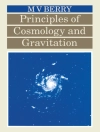Clock synchronization is the backbone of applications such as high-accuracy satellite navigation, geolocation, space-based interferometry, and cryptographic communication systems. The high accuracy of synchronization needed over satellite-to-groundand satellite-to-satellite distances requires the use of general relativistic concepts. The role of geometrical optics and antenna phase center approximations are discussed in high accuracy work. The clock synchronization problem is explored from a generalrelativistic point of view, with emphasis on the local measurement process and the use of the tetrad formalism as the correct model of relativistic measurements. The treatment makes use of J. L. Synge’s world function of space-time as a basic coordinate independent geometric concept. A metric is used for space-time in the vicinity of the Earth, where coordinate time is proper time on the geoid. The problem of satellite clock syntonization is analyzed by numerically integrating the geodesic equations of motion for low-Earth orbit (LEO), geosynchronous orbit (GEO), and highly elliptical orbit (HEO) satellites. Proper time minus coordinate time is computed for satellites in these orbital regimes. The frequency shift as a function of time is computed for a signal observed on the Earth’s geoid from a LEO, GEO, and HEO satellite. Finally, the problem of geolocation in curved space-time is briefly explored using the world function formalism.
Thomas B Bahder
Clock Synchronization and Navigation in the Vicinity of the Earth [PDF ebook]
Clock Synchronization and Navigation in the Vicinity of the Earth [PDF ebook]
Beli ebook ini dan dapatkan 1 lagi GRATIS!
Format PDF ● Halaman 113 ● ISBN 9781617281891 ● Editor Thomas B Bahder ● Penerbit Nova Science Publishers ● Diterbitkan 2018 ● Diunduh 3 kali ● Mata uang EUR ● ID 7219659 ● Perlindungan salinan Adobe DRM
Membutuhkan pembaca ebook yang mampu DRM












